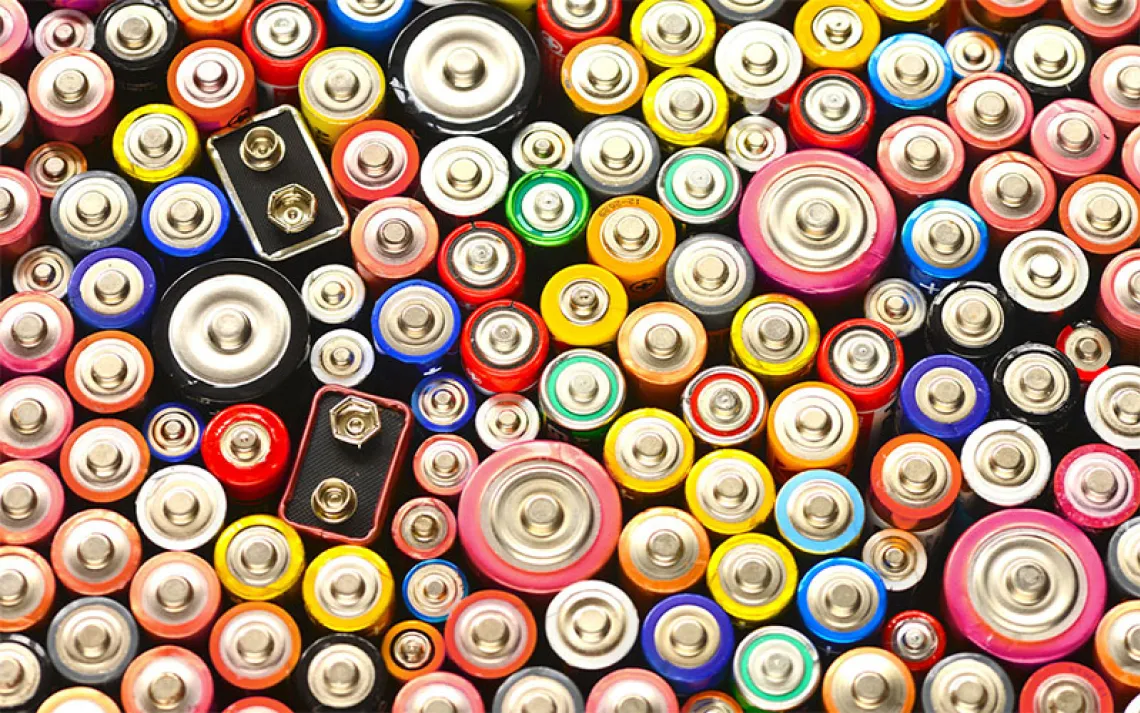Smart Ways to Greenify Your Closet
Because our wardrobes create unfashionably massive environmental issues

The contents of our wardrobes create unfashionably massive environmental issues. The apparel industry is responsible for about 8 percent of carbon emissions and more than a third of the primary microplastic pollution junking up our oceans. Clothing manufacturing also gobbles up enough freshwater to fill 32 million Olympic-size pools every year. That's why more than two dozen major brands have signed a UN pledge to cut carbon emissions by 30 percent by 2030. Zara and Uniqlo are among those jettisoning plastic shopping bags, while H&M and Converse are upcycling old clothes into new ones. Laws can also encourage better behavior—for example, as of February, France requires brands to reuse or recycle unsold inventory. Still, consumers hold a lot of power. Here are simple steps toward assembling a more sustainable wardrobe.
Rayon
According to the forest preservation group Canopy, some 150 million trees are logged annually to make flowy viscose rayon fabric, and about one-third of those trees come from ancient and endangered forests. Seek out viscose rayon certified by the Forest Stewardship Council (REI maintains a roster on its website). Or shop with one of Canopy's partners—brands like Levi's, Eileen Fisher, and C&A—which have set targets to eliminate old-growth forests from their supply chains. Levi's, H&M, and Banana Republic use some tree-free rayon fabrics—Refibra, NuCycl, and Circulose—made from recycled clothes and even farm and food waste. Beware viscose rayon labeled as "eucalyptus" or advertised as "natural" simply because it's from trees.
Cotton
Most cotton is grown using gobs of synthetic chemicals and pesticides. Choose certified-organic cotton clothing and look for the Global Organic Textile Standard label, which guarantees chemical safety from farm to factory. You can also support brands like prAna, which is pledging to use 100 percent sustainable cotton by 2025 as part of a challenge overseen by the nonprofit Textile Exchange.
Shoes
It takes an impossible-to-recycle combo of plastics, foams, rubbers, and glues to manufacture most of the 24.2 billion pairs of shoes created each year. The vast majority of shoes end up in landfills, where they leach plasticizers and heavy metals—your sneakers' foam padding alone can last up to 1,000 years in the dump. So choose shoes that can be resoled, donate those that are worn but not worn out, and buy footwear made from plant-based, recycled, recyclable, or biodegradable materials. Allbirds makes a foam outsole using bio-based plastics sourced from sugarcane, and Converse added a line of All Stars with a recycled-denim upper.
"Easy Care"
Clothes with easy-care qualities—resisting wrinkles, smells, moisture, or stains—can contain toxic chemicals. Stain resistance and waterproofing often come from a coating of fluorochemicals, which don't break down in the environment, and some wrinkle-free clothing is made using formaldehyde, a known carcinogen. "If something is easy-care or wrinkle-free, it should raise a flag that it could contain formaldehyde," says Ben Mead, managing director of Hohenstein Institute America, a textile-chemistry testing company. Seek out clothing with Bluesign or Oeko-Tex Standard 100 certification; these textiles have been tested for chemical safety. And if you need waterproof gear, get stuff labeled as non-perfluorinated, PFC-free, and PFAS-free.
Laundry
Polyester, nylon, and acrylic are common materials used in clothing—and some of the main sources of plastic pollution. Of the estimated 1.5 million tons of primary microplastics contaminating oceans each year, about 35 percent originate in synthetic clothes. Laundry is one of the main culprits. You can use a microplastic-catching laundry bag like Guppyfriend or a Filtrol, a microplastic-filter attachment for your washing machine. Wash clothes on cold, as recent research indicates that shorter, cooler washes reduce microplastics' release by a third.
This article appeared in the November/December 2020 edition with the headline "Green Your Closet."
 The Magazine of The Sierra Club
The Magazine of The Sierra Club



